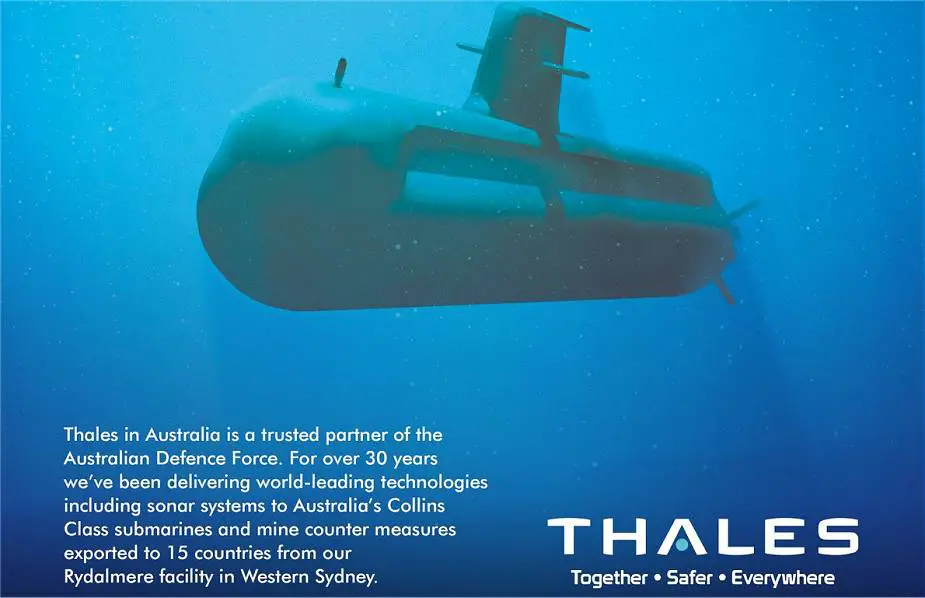Breaking news
Thales UK to provide Sonar Subsystems for the 12 future submarines of Australian Navy.
According to a statement released by the Australian Department of Defence on December 3, 2020, the Australian Morrison Government’s Future Submarine Program continues to progress with the contract signing for the design of the primary underwater sensor of the submarine. The contract has been signed with Thales UK Ltd, through Lockheed Martin Australia, for the design of the outboard flank array and partnering arrangements with the Australian industry.
Follow Navy Recognition on Google News at this link
 Building on 50 years of experience in undersea warfare, Thales is now a global leader in underwater systems and the world’s top exporter of sonars and related systems for naval forces. (Picture source Thales)
Building on 50 years of experience in undersea warfare, Thales is now a global leader in underwater systems and the world’s top exporter of sonars and related systems for naval forces. (Picture source Thales)
The outboard flank array forms part of the Sonar Subsystem, which is used when the submarine is submerged. This vital piece of equipment acts as the submarine’s eyes and ears, providing situational awareness for the crew.
Australian Minister for Defence, Senator the Hon Linda Reynolds CSC said the design of the outboard flank array is vital to the operational effectiveness of the Attack class submarine and its regional superiority.
Thales develops sonar suites based on open, interoperable architectures to accommodate future capability and minimize the cost of ownership. These solutions incorporate high-performance acoustic sensors, integrated processing electronics, and advanced user interfaces.
By combining subsystems such as bow-mounted sonar, flank array sonar, obstacle avoidance sonar, intercept sonar and passive towed-array sonar, Thales builds comprehensive, cohesive and integrated solutions that provide submarines with all-round situational awareness together with the ability to detect, locate and classify all types of threats at short, medium and long-range across a broad spectrum of frequencies.
On 26 April 2016 Prime Minister Malcolm Turnbull announced DCNS (now Naval Group) from France as the preferred international design partner for Australia’s FSP. The successful design is the Shortfin Barracuda Block 1A conventional submarine, which is based on the French Barracuda nuclear-powered submarine.
The acquisition cost of the 12 Future Submarines is estimated at over $50 billion in constant dollars and around $80 billion in out-turned dollars. The sustainment costs for the life of the program out to 2080 are roughly estimated at more than $50 billion in constant dollars and $145 billion in out-turned dollars. Construction of the first Future Submarine is expected to commence in 2022–23 and is scheduled to enter service around 2032–33.


























